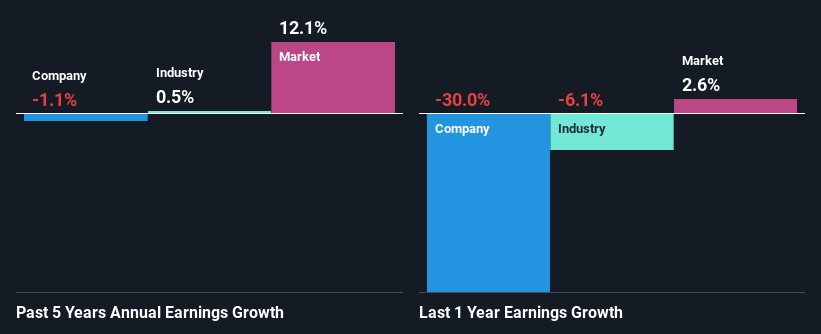PULSION Medical Systems SE (MUN:PUS) Has Fared Decently But Fundamentals Look Uncertain: What Lies Ahead For The Stock?
PULSION Medical Systems' (MUN:PUS) stock up by 2.4% over the past three months. However, we decided to study the company's mixed-bag of fundamentals to assess what this could mean for future share prices, as stock prices tend to be aligned with a company's long-term financial performance. In this article, we decided to focus on PULSION Medical Systems' ROE.
Return on Equity or ROE is a test of how effectively a company is growing its value and managing investors’ money. In short, ROE shows the profit each dollar generates with respect to its shareholder investments.
See our latest analysis for PULSION Medical Systems
How Is ROE Calculated?
The formula for return on equity is:
Return on Equity = Net Profit (from continuing operations) ÷ Shareholders' Equity
So, based on the above formula, the ROE for PULSION Medical Systems is:
24% = €5.0m ÷ €21m (Based on the trailing twelve months to December 2023).
The 'return' is the income the business earned over the last year. So, this means that for every €1 of its shareholder's investments, the company generates a profit of €0.24.
Why Is ROE Important For Earnings Growth?
So far, we've learned that ROE is a measure of a company's profitability. Based on how much of its profits the company chooses to reinvest or "retain", we are then able to evaluate a company's future ability to generate profits. Generally speaking, other things being equal, firms with a high return on equity and profit retention, have a higher growth rate than firms that don’t share these attributes.
PULSION Medical Systems' Earnings Growth And 24% ROE
First thing first, we like that PULSION Medical Systems has an impressive ROE. Second, a comparison with the average ROE reported by the industry of 8.5% also doesn't go unnoticed by us. However, we are curious as to how the high returns still resulted in a flat growth for PULSION Medical Systems in the past five years. Based on this, we feel that there might be other reasons which haven't been discussed so far in this article that could be hampering the company's growth. For example, it could be that the company has a high payout ratio or the business has allocated capital poorly, for instance.
We then compared PULSION Medical Systems' net income growth with the industry and found that the company's growth figure is a bit less than the average industry growth rate of 0.5% in the same 5-year period.
Earnings growth is an important metric to consider when valuing a stock. The investor should try to establish if the expected growth or decline in earnings, whichever the case may be, is priced in. By doing so, they will have an idea if the stock is headed into clear blue waters or if swampy waters await. Is PUS fairly valued? This infographic on the company's intrinsic value has everything you need to know.
Is PULSION Medical Systems Using Its Retained Earnings Effectively?
PULSION Medical Systems has a high three-year median payout ratio of 101% (or a retention ratio of -0.9%), meaning that the company is paying most of its profits as dividends to its shareholders. This does go some way in explaining why there's been no growth in its earnings.
Additionally, PULSION Medical Systems has paid dividends over a period of at least ten years, which means that the company's management is determined to pay dividends even if it means little to no earnings growth.
Conclusion
On the whole, we feel that the performance shown by PULSION Medical Systems can be open to many interpretations. Despite the high ROE, the company has a disappointing earnings growth number, due to its poor rate of reinvestment into its business. Until now, we have only just grazed the surface of the company's past performance by looking at the company's fundamentals. To gain further insights into PULSION Medical Systems' past profit growth, check out this visualization of past earnings, revenue and cash flows.
Have feedback on this article? Concerned about the content? Get in touch with us directly. Alternatively, email editorial-team (at) simplywallst.com.
This article by Simply Wall St is general in nature. We provide commentary based on historical data and analyst forecasts only using an unbiased methodology and our articles are not intended to be financial advice. It does not constitute a recommendation to buy or sell any stock, and does not take account of your objectives, or your financial situation. We aim to bring you long-term focused analysis driven by fundamental data. Note that our analysis may not factor in the latest price-sensitive company announcements or qualitative material. Simply Wall St has no position in any stocks mentioned.

 Yahoo Finance
Yahoo Finance 
